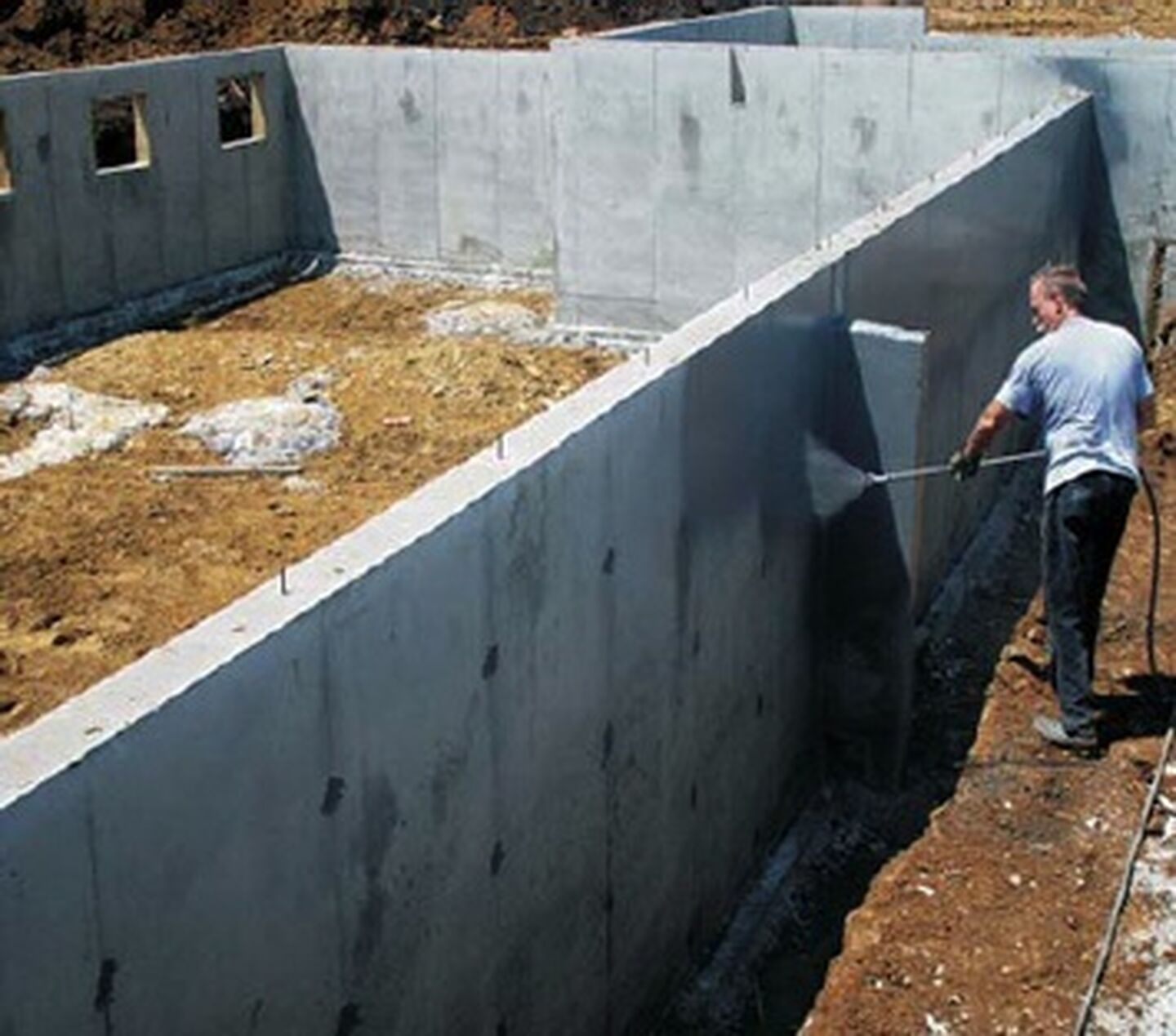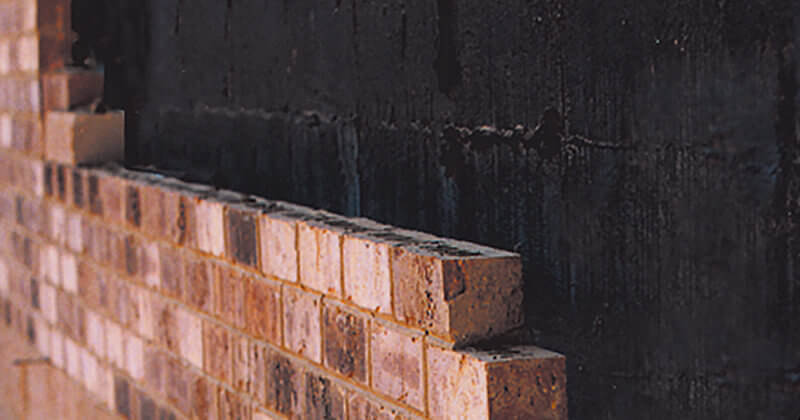10 essential tools damp specialist newcastle uses during inspection
10 essential tools damp specialist newcastle uses during inspection
Blog Article
Understanding the Relevance of Damp Proofing in Averting Structural Damages
Moist proofing works as an important protection against moisture seepage in buildings. This safety measure can prevent significant structural damages, yet several residential property owners remain unaware of its relevance. Acknowledging the signs of moisture and comprehending the numerous options available can be essential. Nonetheless, disregarding damp proofing can bring about serious effects. What are the specific threats and remedies that homeowner should consider?
What Is Damp Proofing and Just How Does It Work?
Wet proofing acts as a necessary obstacle against wetness breach in buildings. mould treatment newcastle. This procedure involves using specific products and strategies to stop water from permeating walls, floors, and various other architectural aspects. Normally, wet proofing can be achieved with the setup of wet evidence membranes, layers, or the use of specialized sealants.These approaches function by developing a safety layer that hinders moisture movement, making certain that the indoor environment stays completely dry and healthy and balanced. Wet proofing is specifically vital in locations susceptible to high moisture or groundwater, as it aids keep the honesty of the structure over time.Moreover, efficient wet proofing adds to power efficiency by stopping warm loss associated with moist atmospheres. By attending to prospective dampness problems before they escalate, damp proofing acts as a proactive step in guarding structures from the harmful effects of water damages, inevitably extending their life expectancy and preserving their worth
Typical Signs of Wetness in a Building
Wetness concerns within a building can manifest via numerous obvious signs that indicate the existence of wetness. One famous indicator is the look of water discolorations on ceilings or wall surfaces, which usually indicates moisture seepage. In addition, peeling or bubbling paint can suggest that excess moisture is caught beneath the surface, resulting in deterioration. Another common sign is the presence of mold and mildew, which flourish in wet problems and can usually be identified by their stuffy odor. A surge in moisture levels can create condensation on home windows and various other surface areas, highlighting moisture issues. Irregular or distorted floor covering might signify underlying moisture that endangers structural integrity. Identifying these indicators early can aid reduce possible damages and preserve a secure living environment. Normal assessments and punctual activity are crucial in dealing with moisture problems before they rise.
The Risks of Overlooking Damp Proofing
Overlooking damp proofing can result in significant threats to a building's structural integrity, as wetness buildup may compromise foundations and wall surfaces. Additionally, extended dampness produces an environment for mold growth, presenting significant wellness hazards to residents. Addressing these threats is important for making certain both safety and long life of the property.
Structural Integrity Threats
When homeowners overlook the relevance of effective wet proofing, they reveal their residential properties to considerable structural honesty threats. Long term wetness seepage can result in the growth of mold and mildew, which weakens fundamental components and can endanger overall stability. Additionally, excess moisture can erode concrete and brickwork, leading to cracks and architectural failings. Timber elements are especially at risk; they can rot and shed load-bearing capacity, positioning major dangers to the structure's framework. Additionally, without treatment damp problems might attract parasites, such as termites, which additionally aggravate structural damage. Inevitably, ignoring wet proofing procedures can cause expensive repair work and possible safety dangers, emphasizing the essential role of aggressive damp monitoring in maintaining the stability of property homes.
Carcinogen Issues
Exactly how can a relatively minor oversight bring about significant health and wellness risks? Disregarding moist proofing can produce a setting for mold and mildew development, which postures substantial health and wellness hazards. Mold spores can activate allergies, breathing concerns, and other health complications, especially in prone populations such as children, the elderly, and individuals with pre-existing problems. Furthermore, consistent dampness can draw in parasites like pests and rodents, which bring diseases that even more compromise wellness. The existence of dampness additionally contributes to a decrease in indoor air top quality, exacerbating bronchial asthma and other respiratory disorders. As a result, the failure to address damp issues not just intimidates architectural integrity however additionally threatens the well-being of residents, highlighting the crucial demand for reliable moist proofing actions.
Different Kinds of Damp Proofing Solutions
Numerous aspects can contribute to damp problems in buildings, choosing the appropriate moist proofing option is crucial for protecting structural integrity. Several alternatives are available, each tailored to details conditions.One typical option is a damp-proof membrane (DPM), usually constructed from polyethylene or bitumen, which is mounted in floors and walls to stop dampness access. An additional alternative is damp-proof training courses (DPC), which are layers of waterproof material put within walls to block climbing damp.Chemical damp proofing includes injecting waterproofing chemicals right into walls to produce an obstacle versus moisture. In addition, external treatments such as tanking, which involves using a waterproof layer to the beyond structures, can be efficient in stopping water penetration.Each solution has its benefits and is selected based upon the building's details issues, ecological conditions, and long-term maintenance considerations, making sure suitable defense against damp-related damage.

The Expense of Damp Damages vs. Avoidance
Understanding the monetary effects of wet damages contrasted to prevention highlights the value of aggressive actions. The prices related to wet damage can be significant, including repair work to architectural components, mold remediation, and potential health-related expenditures. Property owners may face significant economic pressure if extensive damage occurs, resulting in raised insurance premiums and lost residential or commercial property value.In comparison, investing in moist proofing services is generally much much more affordable. First expenses for prevention techniques, such as setting up damp-proof membranes or improving water drainage systems, are frequently surpassed by the lasting cost savings from staying clear of pricey repair work. Additionally, preventing damp issues can improve a residential property's overall value and appeal, making it a sensible investment. When examining the expense of wet damage versus prevention, it comes to be clear that taking aggressive steps can secure financial passions and keep the integrity of the property over time.
Choosing the Right Damp Proofing Technique for Your Property
Which moist proofing technique is most appropriate for a certain property commonly depends upon different aspects, consisting of the structure's age, existing dampness issues, and regional ecological conditions. For older frameworks, standard approaches such as bitumen membrane layers or cementitious coatings might be more effective, as they can supply a robust barrier versus climbing moist. On the other hand, newer structures could take advantage of modern-day options like injected damp-proof programs, which are less invasive and can be tailored to certain wetness challenges.Additionally, homes in locations with high water tables or heavy rains may need even more sophisticated strategies, such as dental caries wall drainage systems or exterior waterproofing. Home owners ought to also take into consideration the specific products utilized in their building's construction, as some techniques might not be compatible. Inevitably, a detailed analysis by a professional can lead homeowner in selecting the most efficient wet proofing approach customized to their distinct situations.
Preserving Your Damp Proofing System With Time
Regular maintenance of a wet proofing system is vital for guaranteeing its long-lasting effectiveness and protecting a residential property from moisture-related damages. Home proprietors should carry out routine evaluations to determine any signs of wear or concession in the damp proofing layer. This consists of monitoring for fractures, peeling paint, or mold growth, which may suggest moisture intrusion.Additionally, it is advisable to clean gutters and downspouts regularly to stop water buildup around the foundation. Reapplying membrane layers or sealers may be required if damage is observed.Engaging professional services for regular evaluations can additionally improve the longevity of the system. These specialists can offer insights into prospective vulnerabilities and advise prompt repair work.
Often Asked Concerns
How Much Time Does Damp Proofing Treatment Last Before Requiring Repair Services?
The long life of wet proofing therapy usually ranges from 10 to 30 years, depending on variables such as the method made use of, environmental conditions, and maintenance practices. Routine examinations can aid figure out when repair services may be needed.
Is Do It Yourself Damp Proofing Effective Contrasted to Expert Services?
The performance of do it yourself damp proofing differs considerably. damp removal newcastle. While some individuals might attain sufficient outcomes, specialist solutions generally ensure extensive remedies, leveraging competence and top quality materials to avoid future issues a lot more dependably than many DIY attempts
Can Damp Proofing Improve Indoor Air Quality?
The inquiry of whether moist proofing can boost interior air high quality develops frequently. Reliable wet proofing decreases dampness degrees, thereby reducing mold growth and irritants, inevitably adding to a much healthier interior setting for residents.
Are There Certain Laws for Damp Proofing in Various Locations?
Rules for damp proofing differ by region, usually influenced by local structure codes and environmental problems. Compliance assurances effective dampness control, protecting structures and advertising safety, which highlights the need for adherence to these details guidelines.

What Are the Long-Term Advantages of Proper Damp Proofing?
The long-term benefits of correct moist proofing include improved architectural integrity, decreased maintenance prices, improved interior air high quality, and raised property value. These advantages add to a much healthier living atmosphere and long term life expectancy of buildings. Typically, wet proofing can be attained with the installment of moist proof membrane layers, finishings, or the use of specialized sealants.These approaches work by developing a protective layer that prevents dampness motion, guaranteeing that the indoor atmosphere remains healthy and dry. Wet proofing is particularly essential in locations vulnerable to high moisture or groundwater, as it assists preserve the honesty of the structure over get more info time.Moreover, reliable wet proofing adds to energy effectiveness by stopping warmth loss linked with moist settings. Overlooking wet proofing can lead to considerable hazards to a building's structural honesty, as moisture buildup might deteriorate structures and wall surfaces (damp specialist newcastle). Different aspects can contribute to damp issues in structures, picking the suitable wet proofing service is necessary for preserving structural stability. Which moist proofing technique is most appropriate for a certain home often depends on various aspects, consisting of the building's age, existing moisture concerns, and neighborhood ecological conditions
Report this page